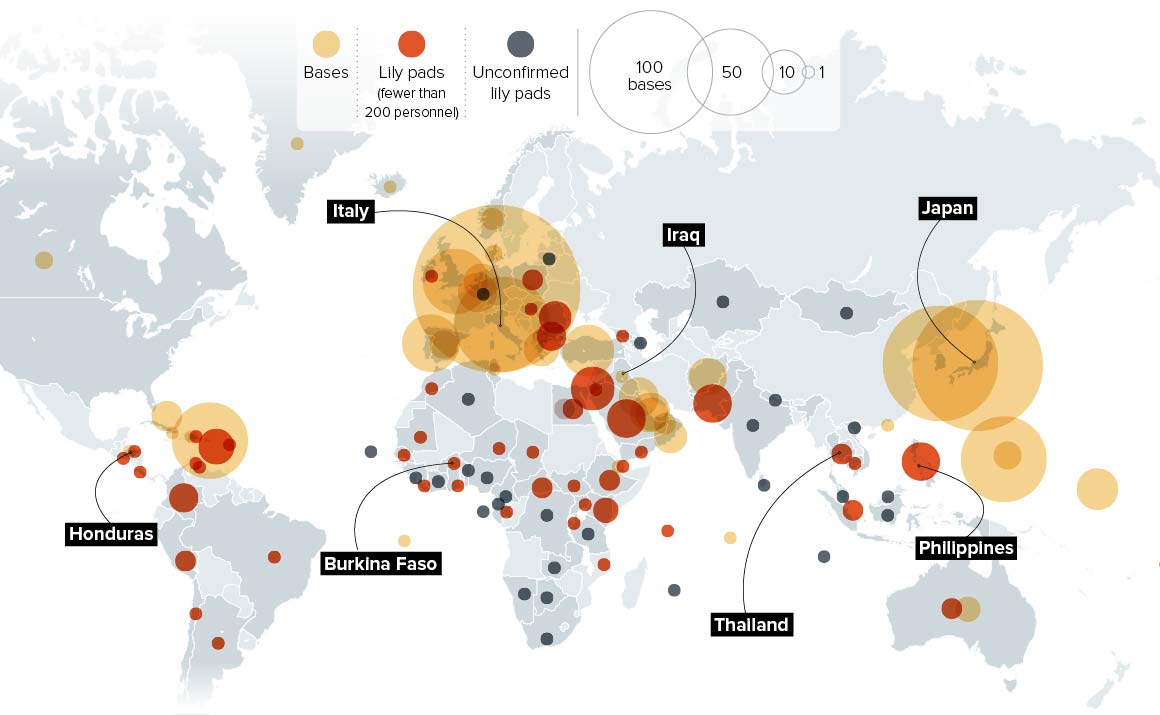Fact: Decades of war across the globe produce trillions of dollars of debt and historic spending levels … a $696.5 billion defense bill passes … 18.7% year-over-year growth … though the Pentagon is the only federal department unable to conduct and pass a financial audit … this is unsustainable
Fiscal Disaster in the Making
Amid the disruptions in the current White House and Congress, business moves forward amid chaotic Congressional proceedings and out-of-sight meetings, proposals and more for weapons.
Business-as-usual but with ‘big bumps’ is the name of the game. Armed Services committee Chairman Mac Thornberry (R-Texas) is a man on a mission and with the new administration he sees a multi-year opportunity.
“If they want to increase end strength in Fiscal Year 19, you need to start in FY 18” is the explanation from a committee staff member speaking of the mark up legislation.
The legislation passed out of committee and received broad bi-partisan support in the House of Representatives.
The consequences of the level of military spending on the nation’s fiscal standing and a broader security agenda went undebated.
Via Defense News
The committee’s top Democrat, Rep. Adam Smith (D-Wash), countered that Congress has “vastly over-promised” on what it can deliver on defense spending… The bill’s base-budget exceeds the $549 billion statutory budget cap for defense, and easing the cap means navigating both deficit hawks in the House and Senate Democrats who will not lift caps without increased domestic spending.
“We have basically not been honest with the American people about the choices that we face, and Oct. 1” — the start of fiscal 2018 — “this all comes to a head, when all these promises that don’t add up leave us in a very bad place.” “It is highly unlikely at the end of this process we will have $696 billion.”
The House Armed Services Committee’s… nearly 14-hour markup (was) the fastest for the panel’s National Defense Authorization Act in years. Committee chair Thornberry estimated at the top of the markup that a new, paperless amendment process would save the committee an hour and $10,000.
Via Forbes
The single biggest section of the discretionary portion of the budget is military spending. For years the Pentagon has been incapable of fiscal responsibility. This is the body that, according to news reports last fall, tried to hide $125 billion in wasted spending over a five year program. It’s the only agency in the entire federal government still unable to pass a financial audit. And it’s handed the largest check even as the Cold War is long over, no other country has our military power, and major new weapons systems have been outright disasters and money sinks.
But big companies that make billions and billions of dollars a year shovel contributions at congressional representatives because it’s a great investment. All that income only required $11 million in 2016 donations, with 38% going to Democrats and 62% to Republicans, according to OpenSecrets.org.
For the 2017 fiscal year that ends on September 30, the Obama budget called for $582.7 billion, which included a base budget of $523.9 billion and the “overseas contingency operations (OCO) budget” of $58.8 billion. The Trump administration wanted to add about $54 billion.
As the Defense Department’s own budget numbers showed, it requested $574.5 billion in base budget and $64.6 billion in OCO for a total of $639.1 billion.
Today, the House passed a $696.5 billion defense bill that makes Trump’s look positively reasonable in comparison
There have been indications the House would insist on more spending than the White House did. The final vote by party is — or maybe it’s should be — surprising. A huge number of Democrats voted for the measure.
There are currently 240 Republicans and 194 Democrats in the body, with 1 vacancy. Out of the Republicans, 227 voted in favor and 8 voted against this bill, making 230, with 10 apparently missing in action. Of the 194 Democrats, 117 voted for the bill and 73 voted against, with 4 not voting. ‘
In other words, of the party that supposedly opposes rampant military spending and the Trump administration, 60% of the Democrats voted for this bill.
There are things the country cannot afford. One is a defense budget that embraces 18.7% year-over-year growth, particularly when pressure on safety net spending increases with a growing population and increasing income inequality while tax receipts are up between 2016 and 2017 by only 5.9%. It seems crazy that the GOP, which fancies itself a champion of fiscal responsibility, agrees to this and the party in opposition, which has a glamorous self-image as some sort of resistance group, marches in step.
1000 Overseas Bases. Necessary?
or Is It Time Now for New Definitions of National Security?
In the midst of an economic crisis that’s getting ‘scarier by the day’, it’s time to ask whether the nation can really afford some 1,000 military bases overseas. For those unfamiliar with the issue, you read that number correctly. One thousand. One thousand U.S. military bases outside the 50 states and Washington, DC, representing the largest collection of bases in world history.



